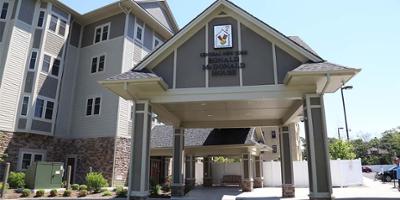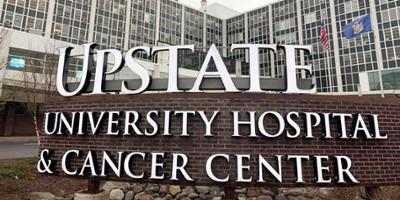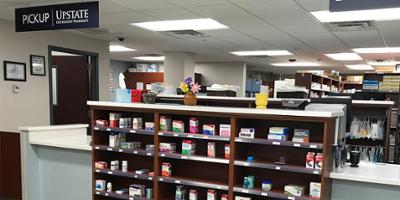Upstate students mine scientific literature for latest on COVID-19 to aid Incident Command process
Physicians and researchers all over the world are sharing research and information on what works, and doesn’t work, in the struggle against COVID-19. “Hundreds of papers are coming out every week,” said Upstate Medical University College of Graduate Studies Dean Mark Schmitt, PhD. “Clinicians just don’t have time to go through it.”
Schmitt, other faculty members and student volunteers at Upstate Medical University created an effort to read through literature, look for the most useful information, and share it with Upstate’s Incident Command team on a weekly basis.
Students read studies as they appear in literature, explained Joan Chou, a third-year medical school student who helped form the group.
Deferring to social distancing, the group gathers virtually twice a week to go over the latest research and share notes. “Students have been a fantastic auxiliary work force,” said Christopher Morley, PhD, chair of Public Health and Preventative Medicine at Upstate. The students’ work has been instrumental in creating models used by the Incident Command team coordinating the University’s response to the outbreak.
“We are definitely using the students’ work product,” Morley said. “Students have responded with obvious professionalism - they see a need, and are eager to fill that need.”
A need is what Sudie-Ann Robinson was looking for after she and all other medical students were told in mid-March by the university that to help ensure the safety of students and the community, all direct patient care opportunities were prohibited. While she understood the need to protect students and conserve personal protective equipment, the third-year medical student felt drawn to help. “We should be plunging in,” she thought. She found out about the research effort and joined in.
Robinson has been focusing on what researchers report about gynecology and obstetrics regarding COVID-19. She said preliminarily indications are that babies born to mothers with COVID-19 are not born with the illness. She has also been looking at disparities in outcomes based on race or other matters.
But in both areas she has found little that is definitive. “There is so little information,” she said.
Vincent Xiao, a third-year-medical school student, said the effort has been evolving. At first, “we were trying to find a way to just condense a lot of the research that was out there for our front line physicians to look at.”
The result was a report delivered each Friday with top findings and links to the original research. The group grew, added students from Upstate’s College of Graduate Studies and College of Health Professions, then added residents, hospitalists and even three students from medical schools in Pennsylvania.
Front line doctors responded by turning to the group with specific questions. For example, they wanted to know when research showed it was safe for COVID-19 patients to go home and what percentage of patients they could expect to need to be on ventilators.
The questions were a great help to the group, said Xiao. “Now we could tailor our research to some of the most clinically-relevant research.”
Caitlin Ward, a Master of Public Health (MPH) student at Upstate who will begin medical school here in the fall, said one challenge has been that much of the research involves a small number of patients, but more information keeps pouring in.
Despite the grimness of the pandemic, Ward says she sees reason for hope. “I think human effort, having all these students working together, is a really good sign.”
Caption: Sudie-Ann Robinson, a medical student at Upstate Medical University, is part of a group of students sifting through the deluge of research articles offered on COVID-19.





